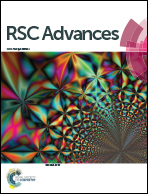A study on coconut fatty acid diethanolamide-based polyurethane foams
Abstract
The possibility of using coconut fatty acid diethanolamide, a derivate from coconut oil as a bio-based polyol for the synthesis of polyurethane foam was explored. The intrinsic tertiary amine moiety in this polyol (p-CFAD) endowed an auto-catalytic effect in the synthesis process of polyurethane foams, combined with a shorter cream and gelation time compared to the fossil-based polyol 3152. H-nuclear magnetic resonance (1H-NMR) and Fourier transform infrared spectrometry (FTIR) were conducted to characterize the chemical structural features of the p-CFAD, and rheology measurement showed the shear-thinning behavior due to the branched structure. A thermal conductivity comparable to the commercial rigid polyurethane foam was achieved when 40wt% fossil-based polyol 3152 was substituted with the bio-based p-CFAD. With the increased content of the p-CFAD, a transition of the physical properties from rigid PU foam to soft PU foam was observed. Scanning electron microscopy (SEM) revealed the occurrence of the interconnected pores on the cell walls with the increase of the added p-CFAD, implying the possibility of regulating the cellular structure and foam properties via the incorporation of the p-CFAD. Results showed the feasibility of using p-CFAD as a potential polyol in the development of bio-based polyurethane foams with high performance.



 Please wait while we load your content...
Please wait while we load your content...